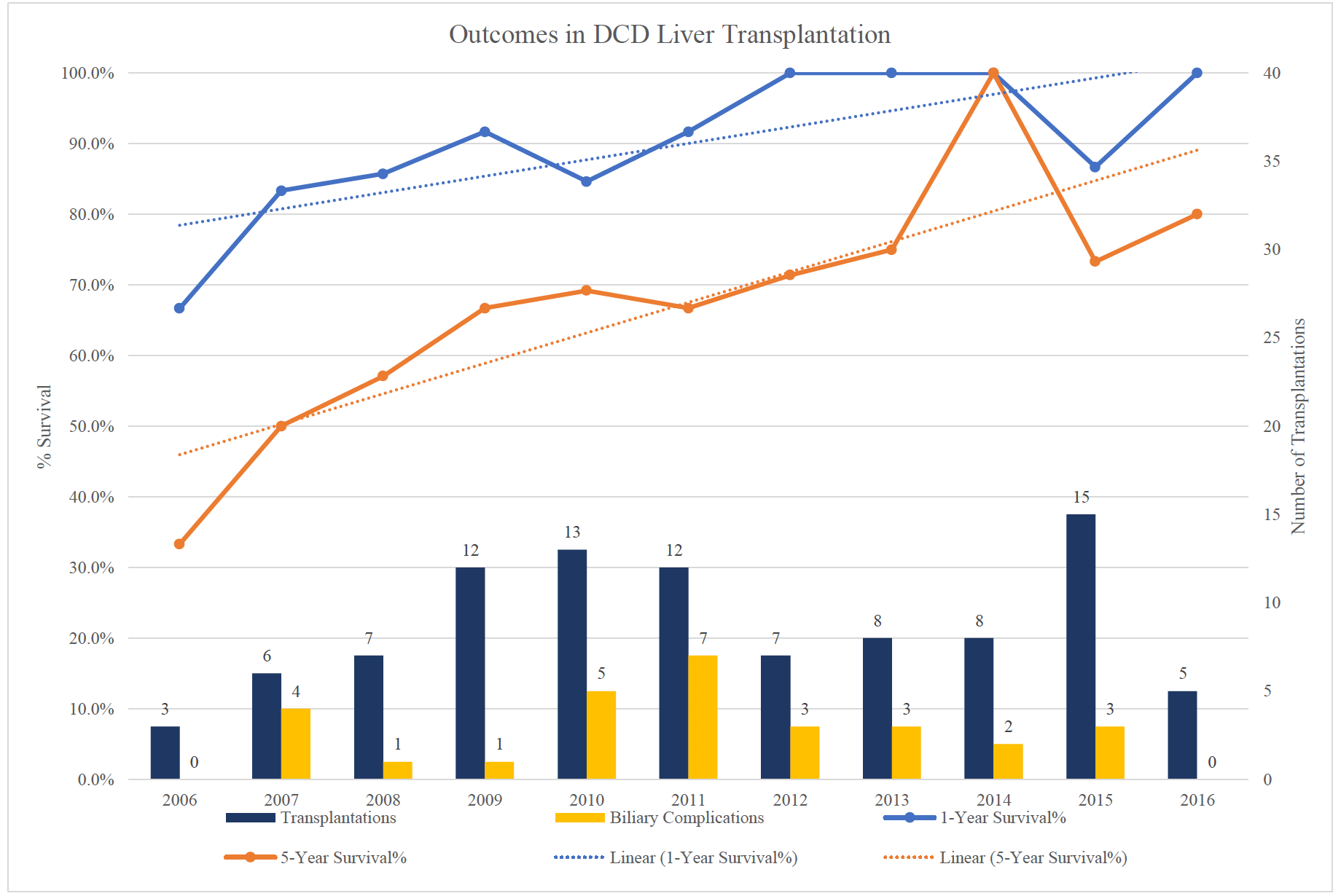Improved Patient Survival in DCD Liver Transplantation
1Department of Surgery, Division of Organ Transplantation, Northwestern University Feinberg School of Medicine, Chicago, IL, 2Rosalind Franklin Medical School, Chicago, IL
Meeting: 2021 American Transplant Congress
Abstract number: LB 87
Keywords: Donors, marginal, Graft failure, Outcome, Survival
Topic: Clinical Science » Liver » Liver: MELD, Allocation and Donor Issues (DCD/ECD)
Session Information
Session Name: Liver: MELD, Allocation and Donor Issues (DCD/ECD)
Session Type: Poster Abstract
Session Date & Time: None. Available on demand.
Location: Virtual
*Purpose: We aim to investigate longitudinal outcomes in DCD liver transplantation over a 10-year period and elucidate trends in patient survival, biliary complication rates, and complication severity.
*Methods: Our cohort included DCD liver transplantations from 2006 to 2016. Donors that were not type III DCD and re-transplantations were excluded. We collected data on patient and donor characteristics, complication rates and severity up to 1 year post-transplant, and 1- and 5- year patient survival. Patients were separated into high and low complication groups based on comprehensive complication index (CCI), with a high level of complication defined as a CCI above 26.2. Linear and logistic regression and Fisher’s exact test were used when appropriate.
*Results: Of 1046 liver transplantations conducted between 2006-2016 at our institution, 96 (9.2%) were first time transplantations using type III DCD organs. Transplantation volume trended upwards over time. Donor and recipient characteristics including MELD score did not differ over time. One-year survival trended upwards (p=0.16) and five-year survival significantly improved over time (p=0.04). Complication severity (p=0.21) and biliary complication rates (p=0.45) did not differ over the time period and had no clear trend. (Figure 1) A total of 29 (30.2%) patients had biliary complications following discharge, including 17 (17.7%) patients with ischemic cholangiopathy. Three (3.1%) patients required re-transplantation, with 2 (2.1%) due to ischemic cholangiopathy. The 1- (89.6% vs. 91.0%, p=0.86) and 5-year patient survival (62.1% vs. 73.1%, p=0.28) did not differ between those with and without biliary complications.
*Conclusions: These data show that transplantation volume and 1-year survival trended upwards and 5-year survival has significantly improved at our institution. This improvement has occurred without a change in biliary complication rates or overall complication severity, and patients with biliary complications were shown to survive comparably to those without. This suggests that, although biliary complications may occur in a large proportion of patients, current treatments for these complication are effective and the rate of graft failure requiring re-transplantation is low. Our data also may suggest improved peri- and post-operative care, resulting in improved outcomes. Thus, DCD liver transplantation remains a viable option and may continue to comprise a growing number of transplantations.
To cite this abstract in AMA style:
Bushara O, Alhalel J, Azad H, Cerri T, Zafer S, Caicedo JC. Improved Patient Survival in DCD Liver Transplantation [abstract]. Am J Transplant. 2021; 21 (suppl 3). https://atcmeetingabstracts.com/abstract/improved-patient-survival-in-dcd-liver-transplantation/. Accessed December 16, 2025.« Back to 2021 American Transplant Congress

